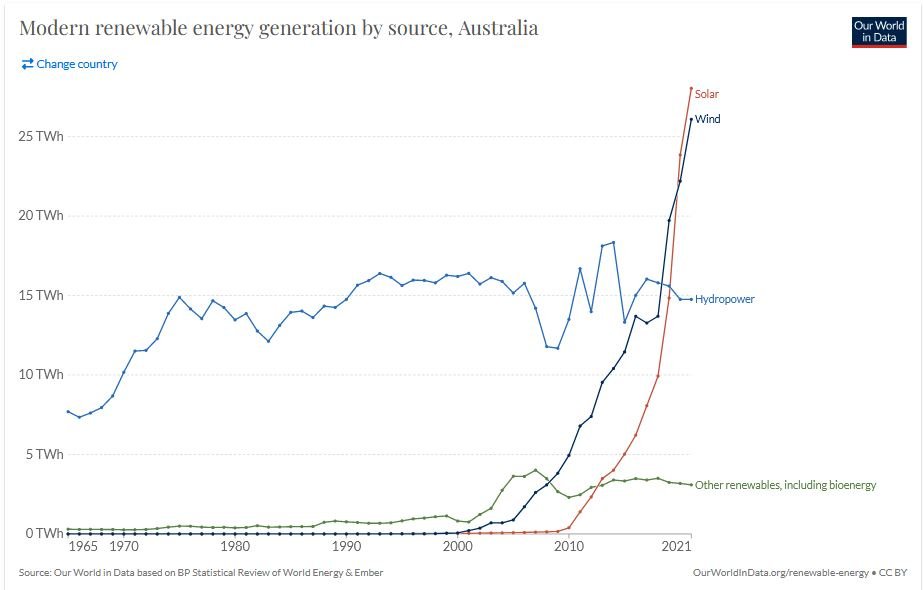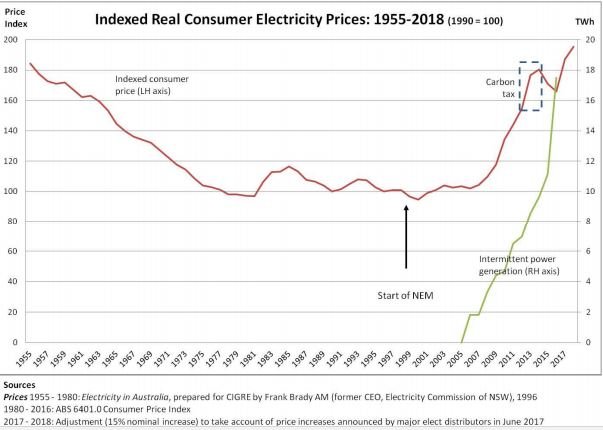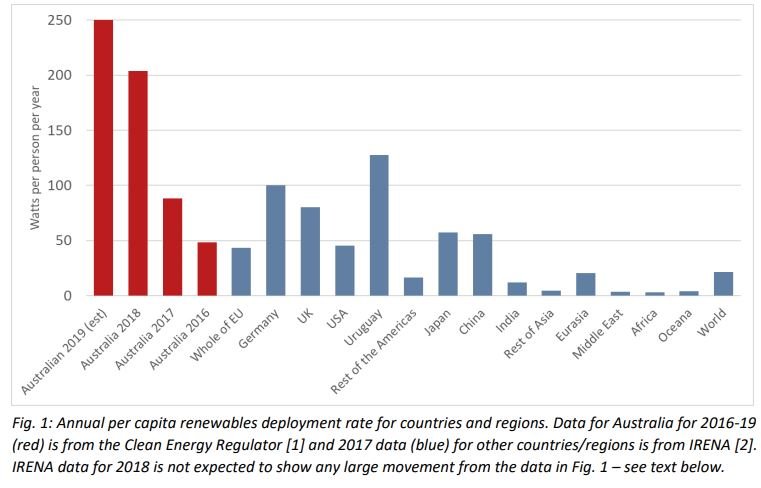Compared with wages, Australian electricity prices went down consistently from about 1955 to 2001.
Over the last twenty years, electricity has increased in price to a point higher than at any time in our history.
The speed of increase is accelerating. Residents of Victoria have been warned to expect a 30% rise this year. Homes and businesses in NSW and Queensland get off lightly, with only a 24% predicted increase.
Chris Bowen, Federal Minister for Industry, Energy and Emissions Reduction blames the Russians. Maybe Russia’s adventures in Ukraine have had some minor effect on Australian electricity prices over the last two years. What else has happened?
Over the same period, Australia has spent more than any other nation, on a per capita basis, on free energy from wind and sun.
The problem is that when you take high capital costs, short component service life, unreliability, transmission and storage costs into account, free energy is far from free. Everywhere large scale renewable energy has been forced into the market by government, prices have increased.
Australia used to be a world leader in primary industry and manufacturing. We are no longer. Australia cannot compete when our energy prices are disproportionately high compared with our neighbours and major trading partners.
We cannot run an economy in the modern world market on unreliable, expensive energy. Businesses will move somewhere else or close.
Australia must stop basing energy policy on wishful thinking, must stop spending tax-payer money on pipe dreams, and as far as possible, stop interfering in energy production and transmission and let the market do its job. Everywhere this has been tried, it has worked.






Leave a Reply